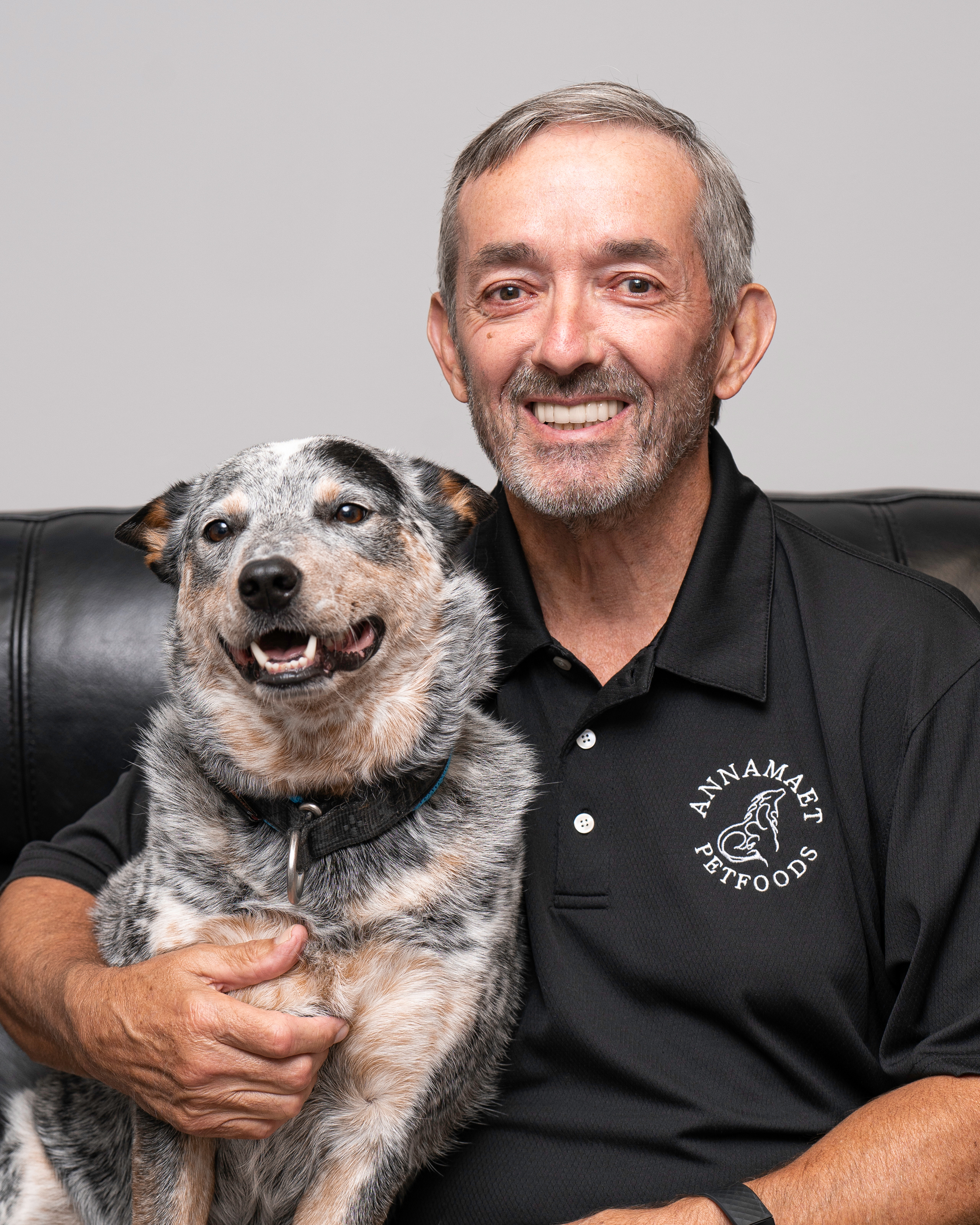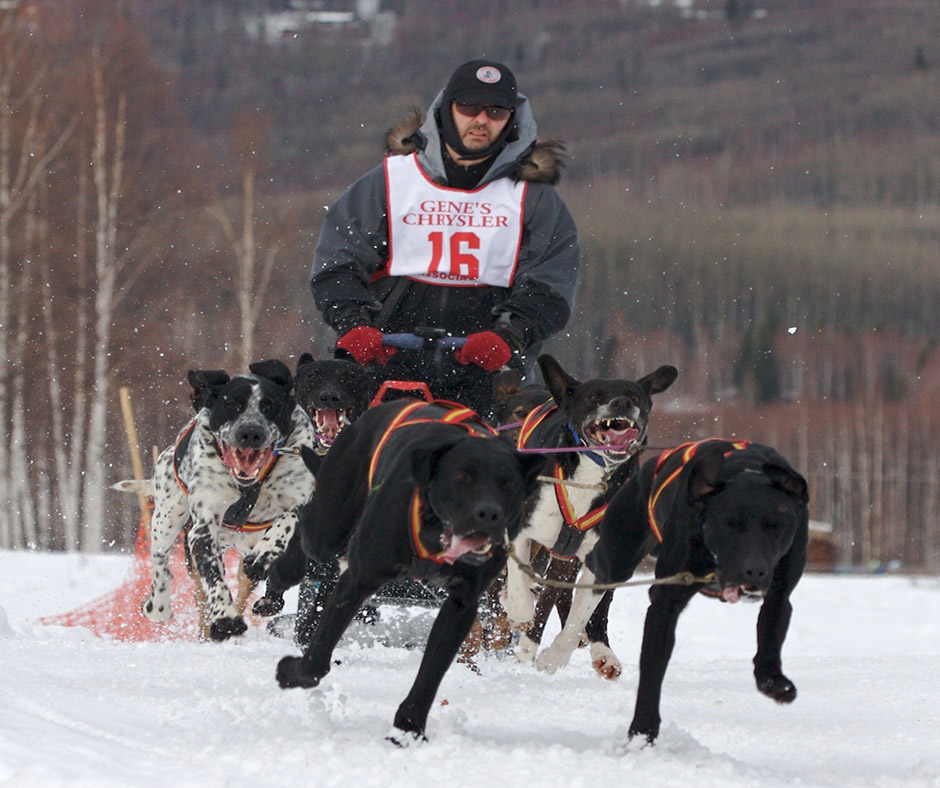535 – Feeding Performance Dogs is All About Balance
Feeding Performance Dogs is All About Balance
 Host Laura Reeves is joined by Rob Downey, CEO of Annamaet, a companion animal nutritionist who conducted seminal research at the University of Pennsylvania on feeding performance dogs.
Host Laura Reeves is joined by Rob Downey, CEO of Annamaet, a companion animal nutritionist who conducted seminal research at the University of Pennsylvania on feeding performance dogs.
“Back in those days,” Downey said, “the idea was that you carbohydrate load (dogs) just like you do humans. We realized that that wasn’t the way to go with dogs. So, we did a study where we could actually increase stamina by 30% in running dogs by altering (the balance of) proteins, fats and carbohydrates. That has become the seminal study. It’s still cited in the NRC nutrient requirements of dogs and cats.
“We found the positive correlation between how much fat was in the diet and how far the dog could run. We found a negative correlation, a slight, very slight, negative correlation between the amount of carbohydrates and how far they could run.
“The bottom line is that any kind of long-term exercise, you’re initially burning stored carbohydrates called glycogen. That really helps you burst out of the gate or run up the hill. But once you start to use that, then these dogs, over time, become fat metabolizers. Eighty percent of the energy these dogs are using when they’re running field trials or sled dog races or more long term, they are burning fat.
“It’s an oxidative process. So, it needs oxygen. So, you need red blood cells to carry the oxygen (to the tissues) to burn the fat. That’s where the protein comes in. So, you need increased fat, you need increased protein, but you do need a minimal amount of carbohydrates to help with stool quality and “feedability.”
“You (also) need that glycogen replenishment. So that if you’re starting on day two in a trial, if you don’t have muscle glycogen stored in the body, what happens is that the dogs really don’t have any zip. They’re pretty sour or they just they don’t bounce back.
Dogs Don’t Require Ingredients, They Require Nutrients
“There’s a whole other group of studies we did on a supplement we make that actually replenishes muscle glycogen. Mother Nature is gonna replenish muscle glycogen over time but if you’re doing back to back events, you need something to replenish some muscle glycogen. So if I’m gonna work my dog today, if I use this glycogen replacement immediately post exercise, tomorrow he’s gonna have 99% of the muscle glycogen restored in the body. If I don’t use anything he’s probably only going to have 50%.
“You need the balance and you can balance out whether you’re doing kibble, raw, freeze dried or whatever. We’re talking about calories and protein, fats, carbohydrates … we haven’t even started talking about vitamins and minerals.
“There was an interesting study where they followed 2,000 beagles for about 15 years. The only thing they varied in the formulas was the vitamin levels. They had low, medium, high, and extra high. The dogs on extra-high vitamins live 23% longer than the dogs on average vitamin levels.
“They had 29% fewer veterinary visits on extra high vitamins than they did average vitamins and they were 32% less likely to have tumors. The sad part is when they went back and they examined the diets on the market, they found less than 5% of the diets had extra high vitamins.”
Tune in to hear the rest of this fascinating interview and learn from an expert on what and how to feed your dog.
295 — Dogs Just Want to Have Fun: Increasing Focus in Performance
Dogs Just Want to Have Fun: Increasing Focus in Performance Dogs
Dr. Paige Pierce, veterinary behaviorist, speaks to the topic of increasing focus in overly social dogs during performance events. This presentation was sponsored by the Clumber Spaniel Health Foundation at the 2018 Clumber Spaniel Club of America National Specialty.
Owners and exhibitors of the social butterflies in the dog world, understand the frustration of competing in performance events with a dog who wants to visit with the course setter or bird planter instead of continuing their task.
Dr. Pierce provides outstanding insight in to understanding the dog’s mindset in these situations.
“When the dog is overly excited, he literally can’t hear the command,” Pierce said.
Once she rules out a medical condition, she wants to identify a trigger and then use the environment to *benefit* the dog instead of distracting them.
Managing the dog’s environment so it doesn’t “use up” impulse control or so it is well conditioned to the chaos, depends on the dog. This requires the owner to find the “best level of arousal for that individual for that sport.”


